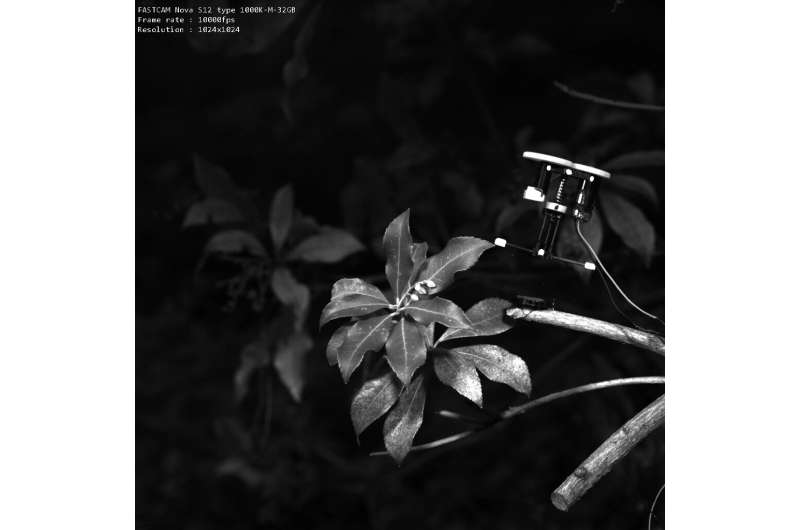Grasshopping robots made possible with new, improved latch control

If animals and insects can jump across grass and sand, why can’t robots? Sarah Bergbreiter, Professor of Mechanical Engineering, has found that researchers don’t have to look far to enable this in robots. Existing latch mechanisms that were once thought of as an ‘on’ or ‘off’ switch to release stored energy can also be used to control jump performance across a wide range of terrains.
“I am interested in how we can build these very functional, very small robots that can move around diverse environments,” Bergbreiter says. “Traditionally, jumping robots are studied on rigid surfaces, so designing a jumper that can function efficiently on soft substrates is a big step for robotics.”
Bergreiter’s team used a mathematical model to illustrate how the latch plays a role in the system’s ability to adapt its jump performance before testing their findings on a robot “jumper.”
“We found that the latch can not only mediate energy output but can also mediate energy transfer between the jumper and the environment that it is jumping from,” Bergbreiter explains. “When using a round latch we can delay the jump and allow the robot to take advantage of the substrate’s recoil.”
The team tested their jumper on a tree branch and watched as the branch recoiled before the jumper took off. This proved that the jumper recovered some of the energy initially lost to the tree branch.
Unexpectedly, Bergbreiter’s team found that a sharp (zero radius) latch sometimes outperformed their rounded latch contrary to model predictions. In these instances, the tree branch collided with the robot after take-off, causing an unconventional form of energy recovery from the substrate bump. The bump gave the jumper additional energy enabling it to outperform the well-controlled rounded latch jumper.
“Now that we understand the natural design space, we can build something that takes advantage of the compliance of these soft substrates,” Berbreiter says.
Biologists are equally motivated to understand this space in order to discern how biological organisms, like grasshoppers, are able to control their energy output when jumping through grass.
“It has been nearly impossible to design controlled insect-sized robots because they are launched in just milliseconds. Now, we have more control over whether our robots are jumping up one foot or three. Or we can simply make it jump consistently despite wide variation in substrate. It’s really fascinating that the latch—something that we already need in our robots—can be used to control outputs that we couldn’t have controlled before.”
The work is published in the Journal of The Royal Society Interface.
More information:
Sathvik Divi et al, Adapting small jumping robots to compliant environments, Journal of The Royal Society Interface (2023). DOI: 10.1098/rsif.2022.0778
Citation:
Grasshopping robots made possible with new, improved latch control (2023, March 2)
retrieved 2 March 2023
from https://techxplore.com/news/2023-03-grasshopping-robots-latch.html
This document is subject to copyright. Apart from any fair dealing for the purpose of private study or research, no
part may be reproduced without the written permission. The content is provided for information purposes only.
For all the latest Technology News Click Here
For the latest news and updates, follow us on Google News.

